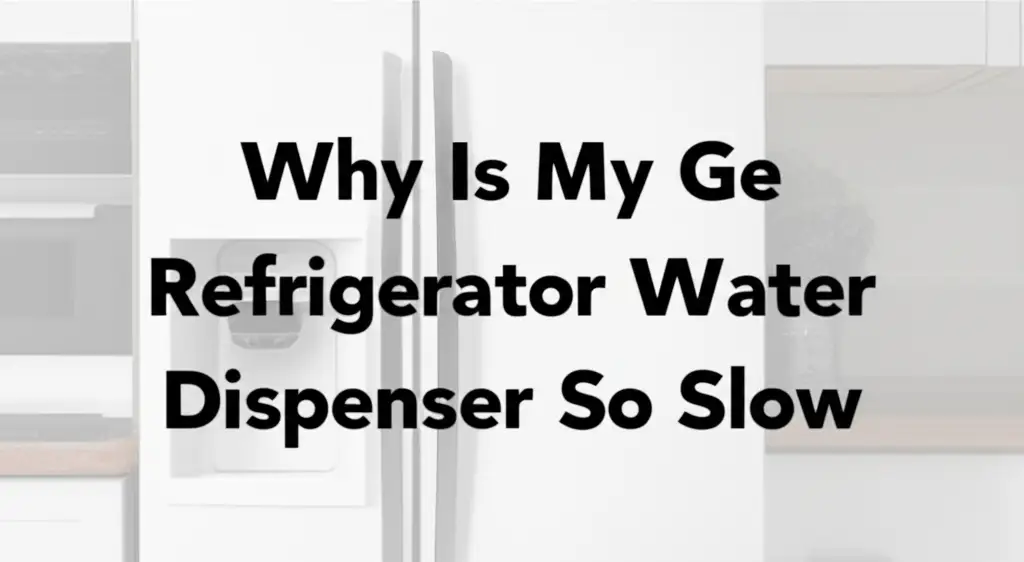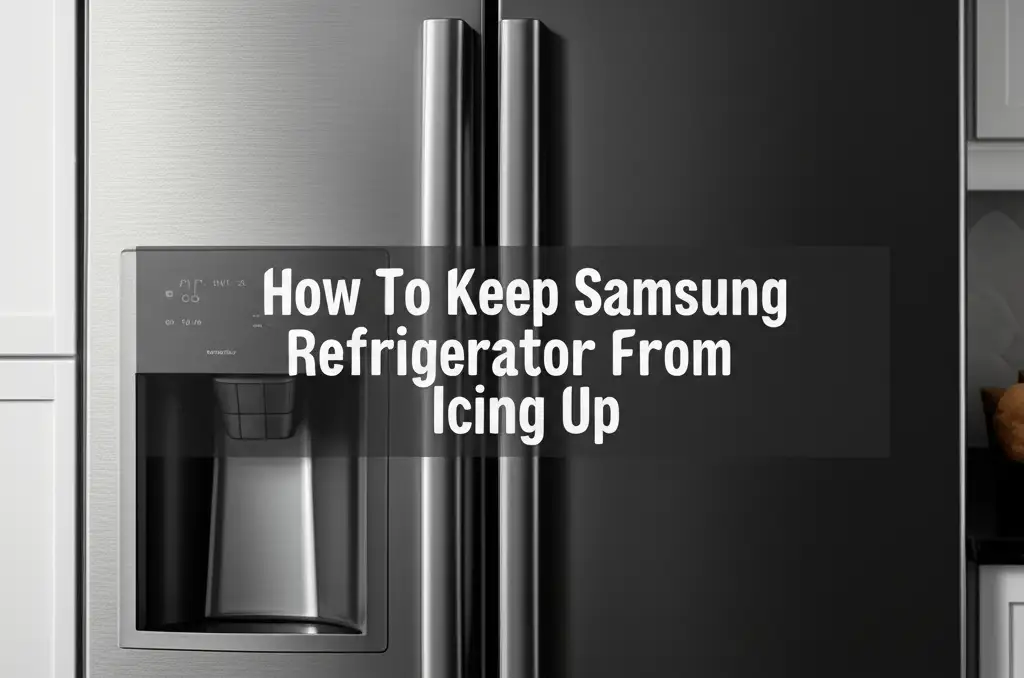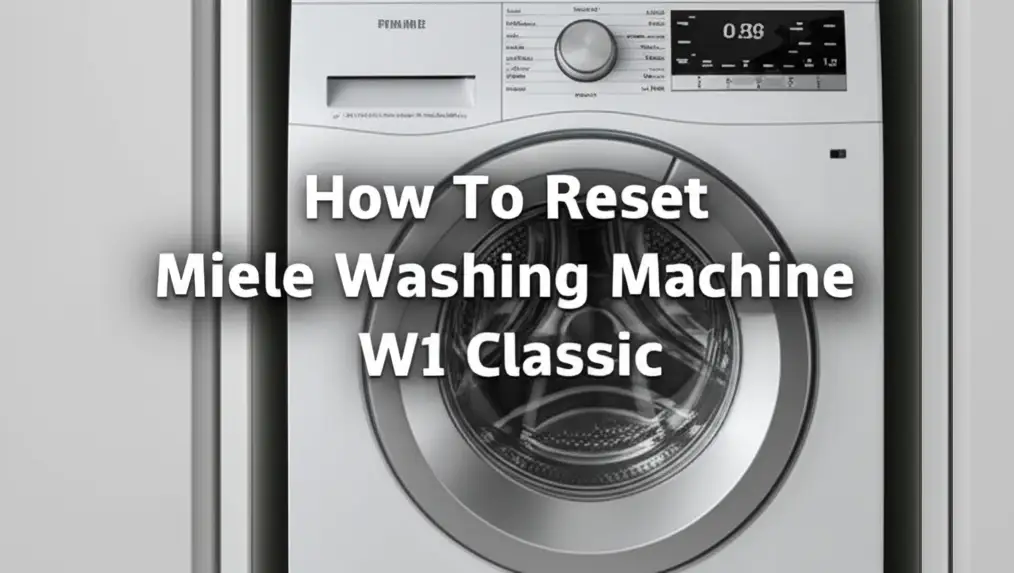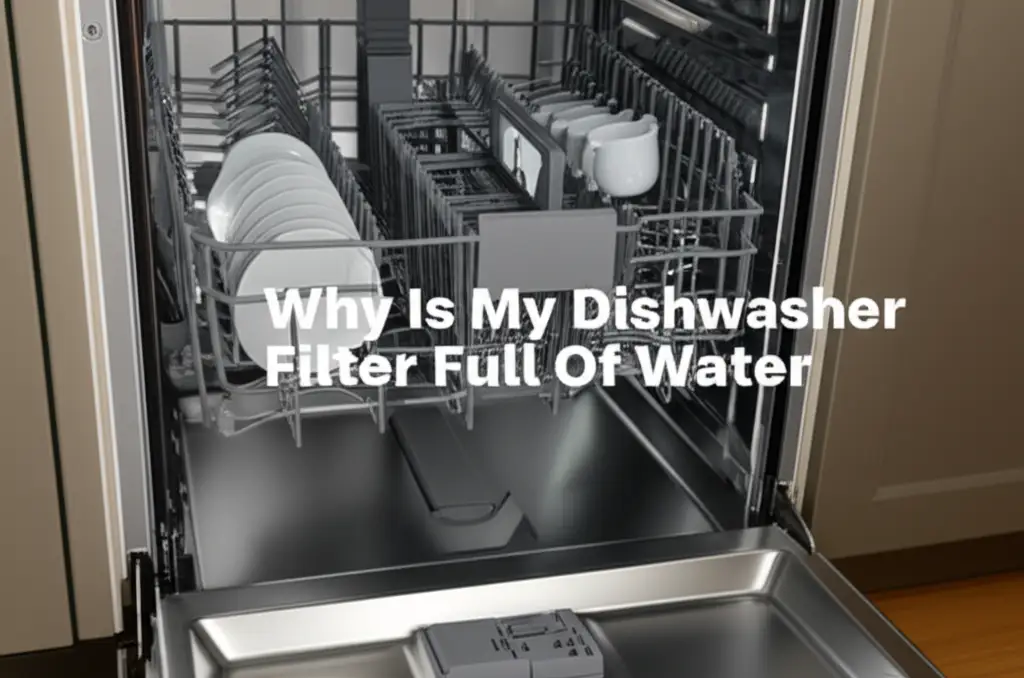· Katria Melrose · Appliance Maintenance · 20 min read
Why Is My Ge Refrigerator Water Dispenser So Slow

Why Your GE Refrigerator Water Dispenser Is So Slow: A Comprehensive Guide
Imagine reaching for a refreshing glass of water from your GE refrigerator, only to be met with a frustrating dribble. I know the feeling. A slow water dispenser is not just an inconvenience; it often signals an underlying issue that needs attention. You expect instant, ample hydration, and when your appliance falls short, it can disrupt your daily routine.
This guide explores the common reasons why your GE refrigerator water dispenser is so slow. We will look at everything from simple fixes, like changing a clogged filter, to more involved troubleshooting steps. Understanding these issues helps you pinpoint the problem quickly. My goal is to empower you with the knowledge to diagnose and fix the slow water flow, restoring your refrigerator’s performance. Let’s get your GE dispenser working properly again.
Takeaway
A slow GE refrigerator water dispenser often indicates a simple, fixable issue.
- Check the water filter first: A clogged filter is the most common cause of slow water flow.
- Verify water pressure: Ensure adequate water supply to the refrigerator.
- Inspect water lines: Look for kinks, pinches, or ice blockages.
- Bleed air from the system: Air trapped after a filter change causes slow dispensing.
- Consider internal components: Water inlet valve or dispenser assembly may need attention.
A slow GE refrigerator water dispenser often results from a clogged water filter, low household water pressure, a kinked or frozen water supply line, or air trapped in the system after a filter replacement. Less common causes include a faulty water inlet valve or a problem with the dispenser’s internal components. Identifying the exact cause helps you restore normal water flow.
The Clogged Water Filter: Your Dispenser’s Worst Enemy
One of the most frequent culprits behind a slow GE refrigerator water dispenser is a clogged water filter. Your refrigerator’s water filter works hard. It removes impurities from your water supply, delivering clean, fresh-tasting water. Over time, these filters accumulate sediment, rust, and other particles from the water. This buildup restricts water flow.
Think of it like a clogged drain. As more debris collects, the pathway for water becomes narrower. This directly reduces the pressure and volume of water coming out of your dispenser. If you notice a significant drop in water flow, especially if it has been months since your last filter change, this is often the first place to look. I always recommend checking this first because it is a quick and relatively easy fix.
Why Filters Clog
Water filters have a limited capacity to hold contaminants. The more impurities in your tap water, the faster your filter will clog. Hard water, which contains high levels of minerals, can also accelerate filter degradation. If you live in an area with particularly poor water quality, you may need to replace your filter more frequently than the manufacturer suggests.
Even without severe water quality issues, filters naturally reach their saturation point. Most GE refrigerator manuals recommend changing the water filter every six months. Ignoring this recommendation leads to diminished water quality and, inevitably, slow water flow. A clogged filter also puts strain on your refrigerator’s water system components. Replacing the filter on schedule protects your appliance and ensures optimal water delivery.
How to Check and Replace Your GE Water Filter
Checking your GE water filter is straightforward. First, locate the filter cartridge in your refrigerator. GE filters are typically inside the fridge compartment, often in the top right corner, or in the grille at the bottom. Once you find it, remove the old filter. I usually notice an immediate difference in water flow when I swap out a visibly dirty filter.
If your GE water dispenser is not working after replacing the filter, you might have air in the line or an installation issue. Before installing the new filter, make sure you choose the correct model for your GE refrigerator. Using an incompatible or generic filter can also lead to poor performance. After installing the new filter, flush several gallons of water through the dispenser to clear any trapped air and carbon dust. This process purges the system and allows water to flow freely. For specific instructions on how to change the water filter in a GE French door refrigerator or how to replace a GE side-by-side refrigerator water filter, consult your appliance manual or a detailed guide. Learn how to change the water filter in a GE French door refrigerator or how to replace a GE side-by-side refrigerator water filter for step-by-step instructions.
Low Household Water Pressure: An External Factor
Sometimes, the problem with your slow GE refrigerator water dispenser isn’t with the refrigerator itself. The issue can stem from low water pressure in your home’s main water supply. Your refrigerator’s water dispenser relies on a consistent flow and adequate pressure from your household plumbing. If the pressure entering your home is too low, all your water-using appliances, including your GE refrigerator, will experience reduced flow. This external factor is often overlooked when troubleshooting dispenser issues.
I always recommend testing the water pressure at other faucets in your home. If you notice slow flow in multiple locations, such as a bathroom sink or a shower, then low household water pressure is a strong possibility. This indicates a broader plumbing issue, not just a problem with your refrigerator. Addressing this fundamental issue will improve water flow to all your appliances.
Identifying Low Household Water Pressure
You can conduct a simple test to check your home’s water pressure. Get a water pressure gauge, which you can find at most hardware stores. Attach the gauge to an outside spigot or a laundry room faucet. Turn the water on full blast. A healthy residential water pressure range is typically between 40 and 60 pounds per square inch (psi). If your reading is consistently below 20 psi, that is likely the cause of your slow GE water dispenser.
Factors contributing to low household water pressure include a partially closed main water shut-off valve, issues with your municipal water supply, or old, corroded pipes in your home. If you suspect your home’s overall water pressure is too low, you may need to contact a plumber. They can diagnose the specific cause and recommend solutions, such as installing a pressure booster pump or addressing pipe issues.
How Low Pressure Affects Your Dispenser
When water pressure is insufficient, the water inlet valve inside your GE refrigerator may not open fully. This valve needs a certain amount of pressure to operate correctly. If it only partially opens, it restricts the amount of water that can enter the refrigerator’s internal system. This results in the frustratingly slow trickle you experience at the dispenser.
Furthermore, low pressure can impact the ice maker’s performance. The ice maker also needs sufficient water flow to fill its molds. If the water supply is weak, your ice production might decrease, or the ice cubes could be smaller than usual. Before diving into complex refrigerator repairs, always rule out the simplest external causes like low water pressure. This step often saves time and effort.
Frozen Water Line: The Icy Obstruction
A common and often puzzling reason for a slow or completely stopped GE refrigerator water dispenser is a frozen water line. While refrigerators are designed to keep things cold, sometimes the thin water line supplying the dispenser can get too cold. This happens especially in the freezer compartment where temperatures are below freezing. A small amount of water inside the line can turn to ice, creating a partial or complete blockage.
When I encounter this, I often find a tiny ice plug. This plug acts like a dam, allowing only a trickle of water to pass through, if any. The result is a frustratingly slow flow, or no flow at all, from your GE dispenser. This issue is more common in certain GE models or if the freezer temperature is set too low. Recognizing the signs of a frozen line can save you from unnecessary repairs.
Where Freezing Occurs
The most common spot for a water line to freeze is where it passes through the freezer door or just before it connects to the water dispenser mechanism. This area is exposed to the coldest temperatures. Sometimes, a tiny bit of condensation can freeze and accumulate, gradually blocking the line. A kink in the line can also create a bottleneck, making that spot more susceptible to freezing.
If your GE water dispenser has been working fine and suddenly slows down, especially after you’ve opened the freezer door for an extended period or adjusted the freezer temperature, a frozen line is a strong suspect. Discover how to keep your GE refrigerator water dispenser from freezing for preventative measures. You might also want to check out why your GE refrigerator water line freezes up for more detailed diagnostic information.
Thawing a Frozen Water Line
Thawing a frozen water line typically involves warmth and patience. First, disconnect power to the refrigerator. Then, you can try several methods. One effective way is to use a hairdryer on a low heat setting, directing it at the suspected frozen area of the water line. Be careful not to use too much heat or hold it too close, as you could damage the plastic line. Give the warmth time to penetrate.
Another method is to simply turn off the water supply to the refrigerator and unplug the unit for several hours, or even overnight. This allows the internal components, including the water line, to warm up and melt any ice. Place towels around the base of the refrigerator to catch any drips. Once thawed, plug the refrigerator back in and restore water supply. Dispense water for a minute or two to flush the line and ensure the blockage is gone. After thawing, consider adjusting your freezer temperature slightly warmer if it was set too low.
The Water Inlet Valve: Controlling the Flow
The water inlet valve plays a crucial role in your GE refrigerator’s water dispenser system. This electrically operated valve opens to allow water from your home supply to enter the refrigerator. It controls the flow to both the water dispenser and the ice maker. If this valve becomes faulty, it can significantly restrict water flow, leading to a slow or non-existent stream from your dispenser.
A common problem with water inlet valves is that they can become clogged with mineral deposits. Over time, hard water leaves behind calcium and magnesium buildup. These deposits can partially block the small screens or passages within the valve. This prevents the valve from opening fully, resulting in reduced water pressure reaching the dispenser.
Diagnosing a Faulty Inlet Valve
Symptoms of a failing water inlet valve include a slow water dispenser and possibly reduced ice production. You might also hear a buzzing or humming sound that is louder than usual when the dispenser is activated. This sound indicates the valve is trying to open but is struggling. To check the valve, you typically need to pull the refrigerator away from the wall and access the back panel.
Before checking the valve, always turn off the water supply to the refrigerator and unplug the unit. Inspect the small screen filter located where the water line connects to the valve. If this screen is clogged with debris, gently clean it. If cleaning the screen does not resolve the issue, the valve itself might be failing internally. An internal malfunction means the valve is not opening completely or is stuck in a partially closed position.
Replacing the Water Inlet Valve
Replacing a water inlet valve is a more involved repair than changing a filter. It requires some basic tools and comfort with appliance repair. You will need to disconnect the water line, electrical connections, and mounting screws. Ensure you purchase the correct replacement valve specific to your GE refrigerator model. Using an incorrect part can lead to leaks or other malfunctions.
After installing the new valve, carefully reconnect all components and turn the water supply back on. Check for any leaks before pushing the refrigerator back into place. A new, properly functioning water inlet valve should restore full water pressure to your GE dispenser. If you are unsure about performing this repair yourself, I recommend consulting a professional appliance technician. Incorrect installation could cause water damage.
Air in the Water Line: Post-Filter Problems
Sometimes, after you’ve dutifully changed your GE refrigerator’s water filter, you might notice that the water dispenser still runs slowly, or even sputters. This often indicates air trapped within the water line. When you replace the filter, air can enter the system. This air forms pockets, which impede the smooth flow of water. It’s a common occurrence and usually a simple fix, but it can be confusing if you’re not aware of it.
I’ve experienced this myself after a filter change. The water comes out in spurts, mixed with air, or just flows very slowly. The air acts as a barrier, preventing water from consistently filling the line. Your refrigerator needs to purge this air to restore normal, consistent water flow. This process is known as bleeding the line. It’s a vital step after any filter replacement or if the water supply to the fridge was turned off.
How Air Gets Trapped
Air can enter the water line in a few ways. The most common is during a water filter replacement. When you remove the old filter, air rushes into the empty space. When you install the new filter, this air gets trapped in the system. Similarly, if your home’s main water supply was turned off for repairs or maintenance, air can enter the lines. When the water supply is restored, this air gets pushed into your refrigerator’s water system.
Another less common scenario is if the refrigerator was recently moved or tilted. This can cause water to drain from the lines, allowing air to replace it. Regardless of how the air gets in, the solution usually involves flushing the system until all the trapped air is expelled. Patience is key when bleeding the lines.
Bleeding Air from the System
To bleed the air from your GE refrigerator’s water line, follow these steps:
- Get a large container: Have a pitcher or bowl ready to catch the water.
- Dispense water continuously: Press and hold the water dispenser lever.
- Wait for clear flow: Continue dispensing water for about 2 to 3 minutes. You will likely hear sputtering noises and see water mixed with air at first.
- Dispense 2-3 gallons: Keep dispensing until the water flows steadily and without air bubbles. This typically requires dispensing between 2 to 3 gallons of water.
This process pushes the trapped air out of the line and replaces it with water. You may need to do this a few times over the course of an hour if the flow doesn’t immediately become consistent. Once the air is purged, your GE refrigerator water dispenser should return to its normal flow rate. If your GE water dispenser is not working after replacing the filter, this air bleeding step is the most common solution. Find more troubleshooting for when your GE refrigerator water dispenser is not working after replacing the filter.
Kinked or Pinched Water Supply Line: A Simple Obstruction
Sometimes, the simplest issues are the easiest to overlook. A kinked or pinched water supply line is a prime example when your GE refrigerator water dispenser is slow. The water line, typically a thin plastic tube, connects your home’s water supply to the back of your refrigerator. If this line gets bent sharply or compressed, it restricts water flow. It’s similar to stepping on a garden hose; the water flow immediately diminishes.
This problem often arises when the refrigerator is moved for cleaning or maintenance. Pushing the appliance back into place can inadvertently cause the line to bend or become trapped against a wall or other objects. Even slight pressure can create a significant blockage, leading to a noticeable drop in water output from the dispenser. I always check this first if the refrigerator has recently been moved.
Locating and Inspecting the Water Line
To check for a kinked or pinched line, you’ll need to pull your GE refrigerator away from the wall. Be careful not to yank it, as you could damage the line further. Once the refrigerator is accessible, inspect the entire length of the water supply line. Pay close attention to:
- Behind the refrigerator: This is where the line often gets squished against the wall or floor.
- Near the water shut-off valve: Ensure the line isn’t bent sharply where it connects to your home’s plumbing.
- Under the refrigerator: The line might run beneath the appliance.
- Areas where the line passes through cabinets or walls: Ensure there are no tight spots or sharp edges.
Look for any sharp bends, twists, or flattened sections in the plastic tubing. Even a slight compression can significantly impede water flow.
Fixing a Kinked Line
If you find a kink or pinch, gently straighten the line. You might need to temporarily disconnect the line from the wall or refrigerator connection points to fully straighten it, but only if you are comfortable doing so and have turned off the water supply first. Once straightened, ensure there is enough slack so that it doesn’t immediately kink again when you push the refrigerator back.
When moving the refrigerator, try to guide the water line by hand to prevent it from getting caught. Make sure it has a smooth, uninhibited path. After repositioning the appliance, test the water dispenser. If a kink was the cause, you should see an immediate improvement in water flow. This is a common and often easily fixed issue that many people overlook before considering more complex repairs.
Dispenser Actuator and Control Board Issues: Electrical Problems
While less common than clogs or kinks, electrical issues can also cause your GE refrigerator water dispenser to operate slowly. The dispenser relies on an actuator, a small switch or lever that you press, to signal the refrigerator’s control board. The control board then sends a signal to the water inlet valve, telling it to open. If there is a fault in this electrical chain, the water dispenser might not receive the full signal to open the valve completely, leading to a slow trickle.
I’ve seen cases where a partially failing actuator or a sluggish control board causes a weak signal. This does not allow the water inlet valve to fully engage, restricting water flow. These issues can be harder to diagnose without specialized tools or experience, but understanding their potential role is important for comprehensive troubleshooting.
The Dispenser Actuator
The dispenser actuator is the component you press with your glass to get water. It’s essentially a switch. Over time, or with heavy use, this switch can wear out. It might not make full contact, sending an intermittent or weak signal to the control board. If you notice that you have to press the actuator harder than usual, or if it feels “sticky,” it could be a sign of wear.
A partially failing actuator might only send enough voltage to partially open the water inlet valve. This results in slow water flow rather than no flow at all. Checking the actuator typically involves disassembling the dispenser housing, which can be intricate. Always disconnect power to the refrigerator before attempting any internal checks.
The Main Control Board
The main control board is the brain of your GE refrigerator. It receives signals from various sensors and switches, including the dispenser actuator, and then sends commands to components like the water inlet valve. If the control board is faulty, it might not process the signal correctly or send a consistent voltage to the water inlet valve. This can lead to a range of issues, including a slow water dispenser.
Symptoms of a failing control board are often varied and can be difficult to pinpoint. Besides slow water, you might notice other unusual behavior from your refrigerator, such as inconsistent temperatures, unusual noises, or problems with the ice maker. Diagnosing a faulty control board usually requires multimeter testing to check voltage outputs. Replacing a control board is a complex repair and is best left to a certified appliance technician. They have the expertise to accurately diagnose and safely replace such a critical component, ensuring your GE refrigerator operates correctly.
Maintaining Your GE Refrigerator for Optimal Water Flow
Preventing a slow water dispenser is often easier than fixing one. Regular maintenance of your GE refrigerator can significantly improve its longevity and ensure consistent, strong water flow. Just like any other appliance, your refrigerator benefits from proactive care. Ignoring simple maintenance tasks can lead to common problems like reduced water pressure or even component failure over time. I find that a little effort upfront saves a lot of hassle later.
By adopting a routine maintenance schedule, you address potential issues before they escalate. This includes not just the water dispenser components but also ensuring the refrigerator’s overall environment is conducive to proper operation. A well-maintained refrigerator works more efficiently and reliably, giving you peace of mind and, most importantly, a steady stream of cold, filtered water.
Regular Water Filter Replacement
This is perhaps the most critical maintenance task for your GE refrigerator’s water dispenser. As discussed earlier, a clogged filter is the most common reason for slow water flow. GE recommends replacing your water filter every six months, or sooner if you notice a drop in water quality or flow. Mark your calendar or set a reminder on your phone.
Using genuine GE replacement filters ensures compatibility and optimal filtration performance. Generic filters might not fit perfectly or provide the same level of filtration, potentially leading to issues. Regularly replacing the filter prevents the accumulation of sediment, which can extend the life of other water system components like the water inlet valve. It also ensures your drinking water remains clean and great-tasting.
Cleaning the Dispenser Nozzle and Tray
Over time, mineral deposits and grime can build up around the water dispenser nozzle and in the drip tray. While this might not directly cause slow water flow, a dirty nozzle can affect the stream’s direction or appearance. Calcium deposits can even partially obstruct the dispenser opening. Regularly clean the nozzle with a small brush or toothpick to remove any buildup.
The drip tray also needs regular cleaning to prevent mold and mildew growth. A dirty tray can become a breeding ground for bacteria, affecting hygiene. Use warm, soapy water to clean the tray and the area around the dispenser button. Learn how to clean your refrigerator water dispenser mold or check out general tips on how to clean your water dispenser. Keeping these areas clean improves overall sanitation and maintains the aesthetic appeal of your GE refrigerator.
Checking Water Supply Line and Connections
Periodically pull your GE refrigerator away from the wall to inspect the water supply line. Look for any signs of kinks, pinches, or leaks. Ensure the line has enough slack so it doesn’t get bent when the refrigerator is pushed back into place. Also, check the connections at the wall shut-off valve and the refrigerator’s inlet valve for any drips. Tighten any loose connections, but be careful not to overtighten.
If you notice any signs of wear, cracks, or leaks in the water line itself, it’s best to replace it. A small leak can lead to significant water damage over time. This simple visual inspection can prevent major headaches and ensure a consistent water supply to your GE dispenser. Regular maintenance is a small investment of time that pays off in reliability and performance.





